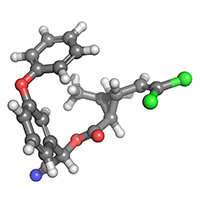Chronic cypermethrin exposure alters mouse embryonic stem cell growth kinetics, induces Phase II detoxification response and affects pluripotency and differentiation gene expression

Submitted: 12 November 2019
Accepted: 5 February 2020
Published: 17 February 2020
Accepted: 5 February 2020
Abstract Views: 1085
PDF: 790
Supplementary: 150
HTML: 5
Supplementary: 150
HTML: 5
Publisher's note
All claims expressed in this article are solely those of the authors and do not necessarily represent those of their affiliated organizations, or those of the publisher, the editors and the reviewers. Any product that may be evaluated in this article or claim that may be made by its manufacturer is not guaranteed or endorsed by the publisher.
All claims expressed in this article are solely those of the authors and do not necessarily represent those of their affiliated organizations, or those of the publisher, the editors and the reviewers. Any product that may be evaluated in this article or claim that may be made by its manufacturer is not guaranteed or endorsed by the publisher.
Similar Articles
- A Franchini, The distribution of cells containing FMRFamide- and 5-HT-related molecules in the embryonic development of Viviparus ater (Mollusca, Gastropoda) , European Journal of Histochemistry: Vol. 49 No. 3 (2005)
- Shufeng Xiao, Haoren Tang, Yao Bai, Renchao Zou, Zongfang Ren, Xuesong Wu, Zhitian Shi, Song Lan, Wei Liu, Tiangen Wu, Cheng Zhang, Lin Wang, Swertiamarin suppresses proliferation, migration, and invasion of hepatocellular carcinoma cells via negative regulation of FRAT1 , European Journal of Histochemistry: Vol. 64 No. 4 (2020)
- A Sedo, R MalÃk, K Drbal, V Lisá, K Vlasicová, V Mares, Dipeptidyl peptidase IV in two human glioma cell lines , European Journal of Histochemistry: Vol. 45 No. 1 (2001)
- K Smetana, K Kuželová, M Zápotocky, J Starková, Z Hrkal, J Trka, Mean diameter of nucleolar bodies in cultured human leukemic myeloblasts is mainly related to the S and G2 phase of the cell cycle , European Journal of Histochemistry: Vol. 51 No. 4 (2007)
- Xin Li, Shaoyu Yang, Minna Zhang, Shuhuan Xie, Zefeng Xie, Downregulation of SRPK2 promotes cell cycle arrest though E2F1 in non-small cell lung cancer , European Journal of Histochemistry: Vol. 63 No. 4 (2019)
- R Iwasaki, S Matsubara, T Takizawa, T Takayama, Human amniotic epithelial cells are morphologically homogeneous: enzymehistochemical, tracer, and freeze-substitution fixation study , European Journal of Histochemistry: Vol. 47 No. 3 (2003)
- Carlo Alberto Redi, A picture is worth a thousand tables - graphics in life sciences , European Journal of Histochemistry: Vol. 57 No. 3 (2013)
- B Vitolo, MR Lidonnici, C Montecucco, A Montecucco, A new monoclonal antibody against DNA ligase I is a suitable marker of cell proliferation in cultured cell and tissue section samples , European Journal of Histochemistry: Vol. 49 No. 4 (2005)
- D. Kluchova, A. Bolekova, C. Heichel, A. J. Bron, I. Kozak, NADPH-diaphorase expression in the Meibomian glands of rat palpebra in postnatal development , European Journal of Histochemistry: Vol. 54 No. 4 (2010)
- D Marzioni, C Crescimanno, D Zaccheo, R Coppari, CB Underhill, M Castellucci, Hyaluronate and CD44 expression patterns in the human placenta throughout pregnancy , European Journal of Histochemistry: Vol. 45 No. 2 (2001)
<< < 53 54 55 56 57 58 59 60 61 62 > >>
You may also start an advanced similarity search for this article.

 https://doi.org/10.4081/ejh.2020.3084
https://doi.org/10.4081/ejh.2020.3084










